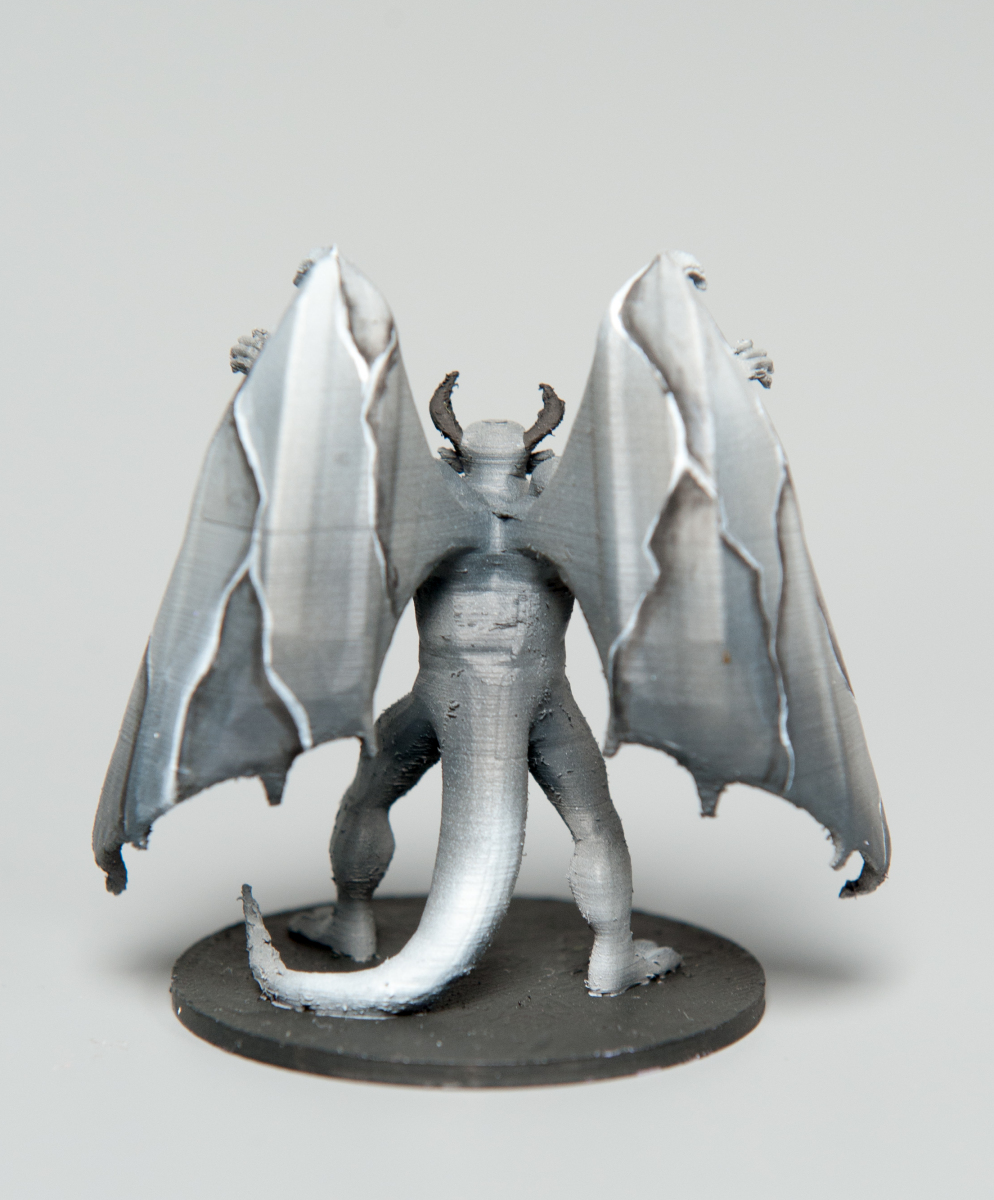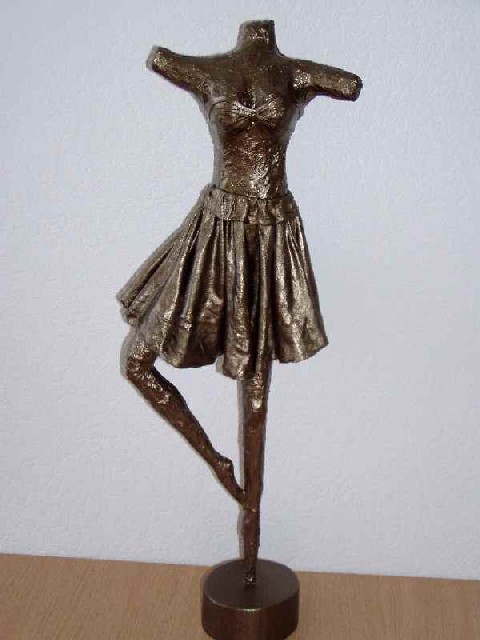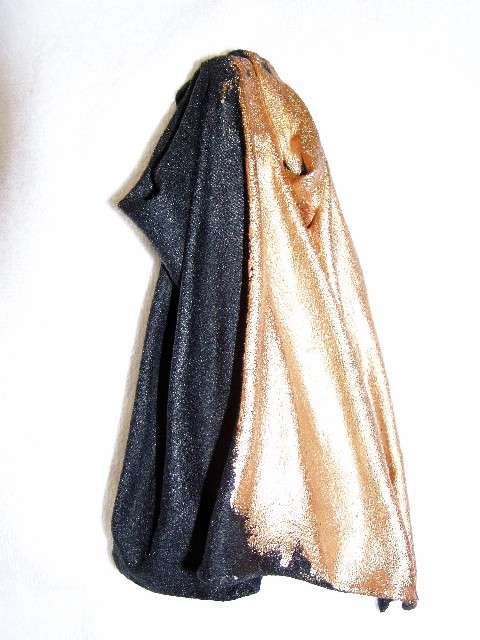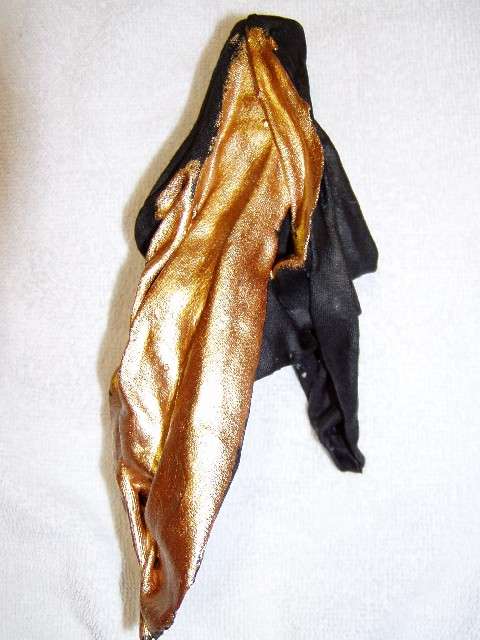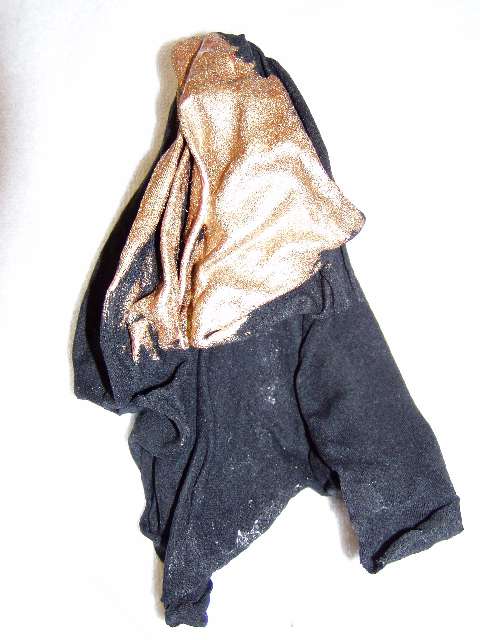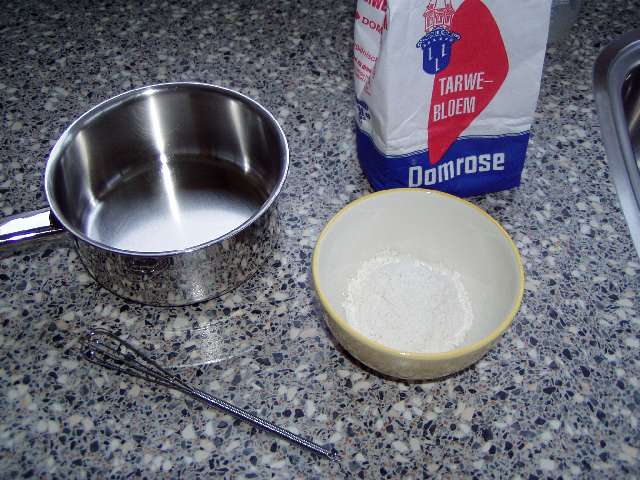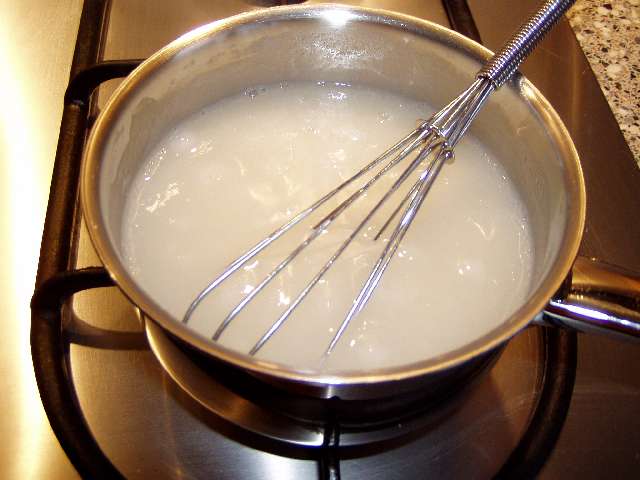General procedure for stiffening fabric:
- Cut the fabric to the desired size that needs to be stiffened, or sew it together if necessary to achieve the desired shape.
- Fit the fabric onto the support. Take into account that wet fabric, especially jersey fabric, can stretch.
- Completely immerse the fabric in the glue or fabric stiffener, ensuring that all parts are well covered.
- Squeeze out excess glue from the fabric.
- Drape the fabric onto the support. Optionally, you can temporarily support the fabric elsewhere. However, cover these supports with plastic wrap to make them easier to remove later.
- Allow the entire assembly to dry thoroughly.
- Further finish the fabric with paint or varnish.
|
There are several products available on the market specifically for stiffening fabric or textiles. Some well-known products include:
- Paverpol
- Pretex
- Powertex.
- Polytex (Make Me ; Kars)
- Mod Podge
These products can be combined with dyes and are often available in various colors. For proper usage and application possibilities, you can refer to the respective websites.
However, there are also other products suitable for stiffening fabric, including some very inexpensive ones. If you paint the treated fabric well and seal it with waterproof varnish, possibly applying multiple layers, these sculptures can also withstand outdoor conditions.
|
- Wood glue, white hobby glue, or PVA glue; This becomes very hard and is easily paintable. The fabric gains a slightly grainy shiny texture. It's often more economical to buy a large bucket of wood glue than specialized fabric stiffeners.
|
- Wallpaper glue; this becomes slightly less hard than wood glue. The fabric retains its original texture, which remains visible through the paint. Avoid painting it too wet, or it may become soft again. This option is much cheaper than wood glue or white craft glue.
|
- Glue made from flour and water. This produces a very hard product, although its hardness may vary depending on the thickness of the glue. The product is easily paintable. The fabric takes on a very smooth appearance and becomes slightly lighter in color. This is a very inexpensive alternative to the often costly specialized textile hardeners.
|
recipe for glue made from flour and water:
- Boil 5 cups of water.
- Mix ¼ cup of sifted flour with one cup of cold water.
- Mix until you have a smooth paste without lumps. It's crucial to ensure that all lumps are dissolved; otherwise, they will remain in the glue and create hard chunks on your workpiece.
- Add this mixture to the boiled water.
- Let the mixture simmer gently, stirring occasionally, for about three minutes until it thickens.
- Allow it to cool before use.
- For a thicker glue, use 1 cup of flour for every 3 cups of water.
|
| The glue resulting from this process looks similar to wallpaper paste, is very inexpensive, and easy to work with. |



